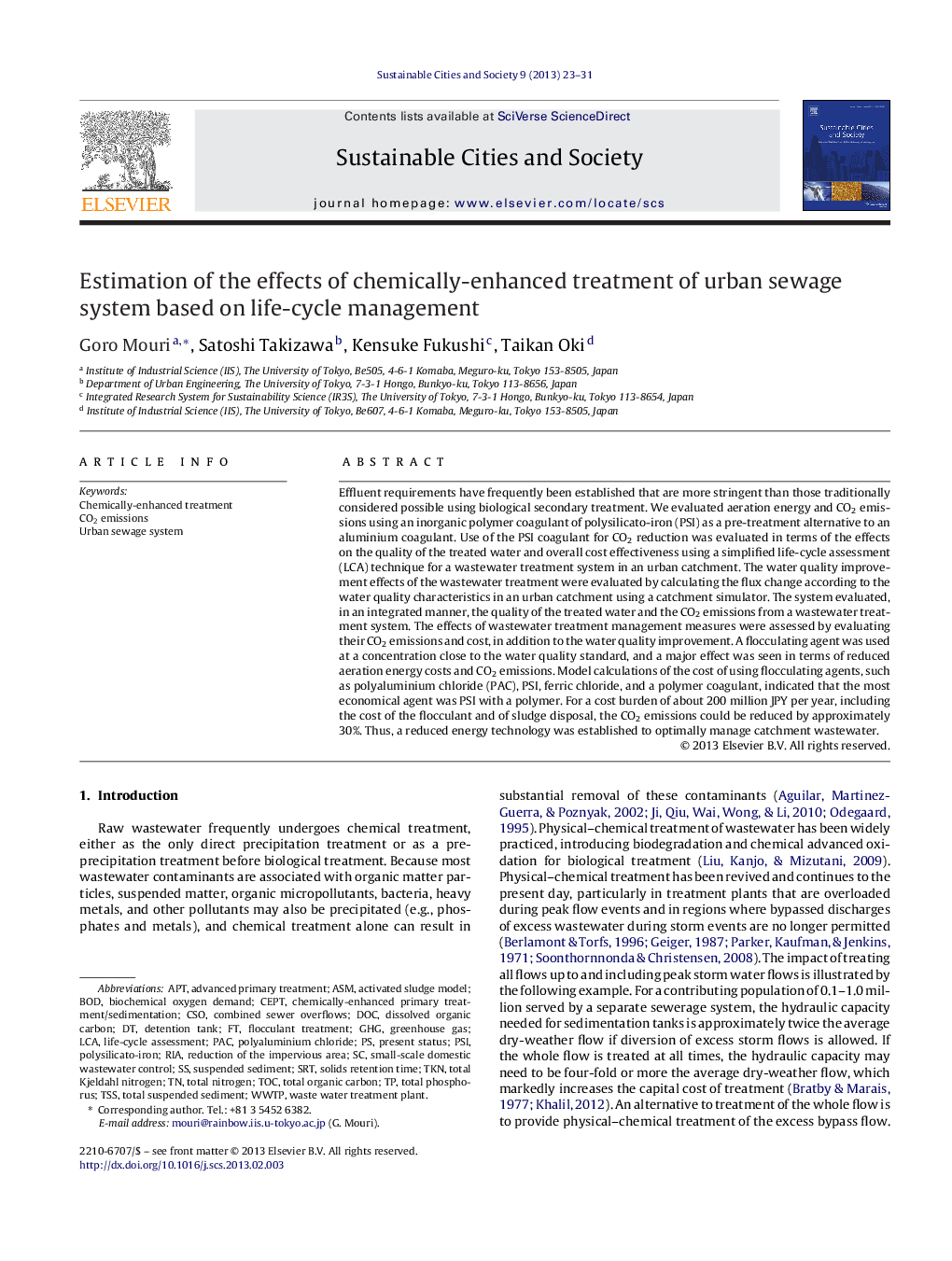| کد مقاله | کد نشریه | سال انتشار | مقاله انگلیسی | نسخه تمام متن |
|---|---|---|---|---|
| 6776916 | 513533 | 2013 | 9 صفحه PDF | دانلود رایگان |
عنوان انگلیسی مقاله ISI
Estimation of the effects of chemically-enhanced treatment of urban sewage system based on life-cycle management
ترجمه فارسی عنوان
برآورد اثرات درمان شیمیایی پیشرفته سیستم فاضلاب شهری بر اساس مدیریت چرخه زندگی
دانلود مقاله + سفارش ترجمه
دانلود مقاله ISI انگلیسی
رایگان برای ایرانیان
کلمات کلیدی
CEPTTKNAPTCSOASMPSIRIAsRTPACBODDOCGHGTOCWWTPTSSLife-cycle assessment - ارزیابی چرخه حیاتLCA - ارزیابی چرخه حیاتCO2 emissions - انتشار گاز CO2biochemical oxygen demand - بیوشیمیایی نیاز به اکسیژنWaste water treatment plant - تصفیه خانه فاضلابadvanced primary treatment - درمان اولیه پیشرفتهSuspended sediment - رسوب معلقSolids retention time - زمان نگهداری جامداتCombined sewer overflows - سرریز فاضلاب ترکیبیActivated sludge model - مدل لجن فعالtotal nitrogen - نیتروژن کاملpolyaluminium chloride - پلی آلومینیم کلریدDissolved organic carbon - کربن آلی حل شدهTotal phosphorus - کل فسفرtotal Kjeldahl nitrogen - کل نیتروژن KjeldahlTotal organic carbon - کل کربن آلیGreenhouse gas - گاز گلخانه ای
موضوعات مرتبط
مهندسی و علوم پایه
مهندسی انرژی
انرژی های تجدید پذیر، توسعه پایدار و محیط زیست
چکیده انگلیسی
Effluent requirements have frequently been established that are more stringent than those traditionally considered possible using biological secondary treatment. We evaluated aeration energy and CO2 emissions using an inorganic polymer coagulant of polysilicato-iron (PSI) as a pre-treatment alternative to an aluminium coagulant. Use of the PSI coagulant for CO2 reduction was evaluated in terms of the effects on the quality of the treated water and overall cost effectiveness using a simplified life-cycle assessment (LCA) technique for a wastewater treatment system in an urban catchment. The water quality improvement effects of the wastewater treatment were evaluated by calculating the flux change according to the water quality characteristics in an urban catchment using a catchment simulator. The system evaluated, in an integrated manner, the quality of the treated water and the CO2 emissions from a wastewater treatment system. The effects of wastewater treatment management measures were assessed by evaluating their CO2 emissions and cost, in addition to the water quality improvement. A flocculating agent was used at a concentration close to the water quality standard, and a major effect was seen in terms of reduced aeration energy costs and CO2 emissions. Model calculations of the cost of using flocculating agents, such as polyaluminium chloride (PAC), PSI, ferric chloride, and a polymer coagulant, indicated that the most economical agent was PSI with a polymer. For a cost burden of about 200 million JPY per year, including the cost of the flocculant and of sludge disposal, the CO2 emissions could be reduced by approximately 30%. Thus, a reduced energy technology was established to optimally manage catchment wastewater.
ناشر
Database: Elsevier - ScienceDirect (ساینس دایرکت)
Journal: Sustainable Cities and Society - Volume 9, December 2013, Pages 23-31
Journal: Sustainable Cities and Society - Volume 9, December 2013, Pages 23-31
نویسندگان
Goro Mouri, Satoshi Takizawa, Kensuke Fukushi, Taikan Oki,
